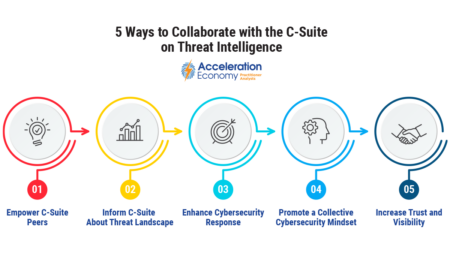There is significant strategic value in looking at how cybersecurity threats are evolving and how that relates to strategic business plans.
Search Results: threat intelligence (224)
Chris Hughes explains why sharing insights from threat intelligence with other senior execs can be a force multiplier in reducing organizational risk.
Security leaders should have conversations with key personnel in HR, finance, and sales/marketing to ensure alignment between security and business goals.
These two complementary cybersecurity practices, when combined, enable organizations to quickly and effectively identify and mitigate potential cyber threats.
Leveraging threat intelligence for operational needs can make organizations more effective and adaptable in modern cybersecurity operations.
Organizations need to invest in the right people, processes, and technologies to protect themselves from online threats in particular.
Contextualizing your organization’s key risks and general technology trends with peers is the best way to prepare against future security threats.
In this analysis, Chris Hughes explores a subset of threat intelligence that focuses on malware and specific behavioral threat indicators for malicious actors.
Fortinet has become a member in the Joint Cyber Defense Collaborative, contributing its threat intelligence research to strengthen U.S. cyber resilience.
Strategic threat intelligence can be used to prepare for future threats, and an organization’s strategy should be adopted accordingly.
Tactical threat intelligence is gathering, analyzing, and sharing data to find cyber threats and figure out how to deal with them. Learn how to set up a program.
Threat intelligence gathers and utilizes data about potential threats to keep corporate data safe. It’s especially useful in a multicloud scenario.
Knowledge is power, and in the world of cybersecurity, the threat intelligence lifecycle is key to unlocking that power.
Small- and medium-sized businesses can stay current on the latest threats and detect and prevent attacks with tailored threat intelligence data by leveraging open-source platforms, tools, and communities.
AI Index Report Ep 16: HeyGen uses AI and deep fakes for language translations; Wraithwatch gains funding for generative AI threat detection; and Microsoft launches its lightweight phi-1.5 model.
The Cybercrime Atlas is a collaborative effort involving businesses, law enforcement agencies, and researchers to combat cybercrime and strengthen global defenses against cyber threats.
Machine learning is impacting endpoint security in areas such as enhanced threat detection, false positivity reduction, and the ability to implement proactive security measures.
The new resource provides intelligence on malicious actors and attack vectors, especially those used in recent software supply chain attacks.
Analyst and CISO Frank Domizio lays out how the accelerating use of artificial intelligence (AI) in cybersecurity can ultimately improve a company’s security posture.
Frank Domizio explains how AI is becoming increasingly popular within the realm of cybersecurity, noting the applications of this technology.




















